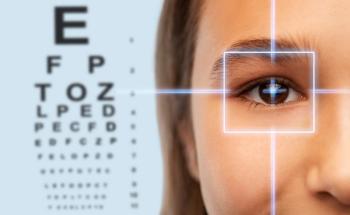
Paediatric patients with early-onset atopic dermatitis show higher uveitis risk
The study findings support the need to consider ophthalmologic monitoring in children with early-onset atopic dermatitis
Taiwanese investigators found in their cohort study that children with early-onset atopic dermatitis had an increased risk of developing uveitis and should be carefully observed to identify that onset.1 The study was led by Yung-Yu Chu, MD, from the Department of Ophthalmology, Chi Mei Medical Center, Tainan, Taiwan.
The researchers retrospectively evaluated the electronic health records of US patients in TriNetX, a collaborative research network, to identify patients with early-onset atopic dermatitis. The study also included matched controls without atopic dermatitis and excluded patients with uveitis before atopic dermatitis was diagnosed. The primary outcome was the hazard ratio (HR) for developing paediatric uveitis in the atopic dermatitis cohort compared with the matched controls, the authors explained.
The search of the health records identified 114,889 patients in the atopic dermatitis and control cohorts; the respective mean patient ages were 0.5 year and 0.6 years.
The results showed that 94 patients with atopic dermatitis developed paediatric uveitis compared with 58 controls (HR, 1.92 [95% confidence interval [CI], 1.38-2.66]).
The results also found that patients in the atopic dermatitis cohort who were not treated with dupilumab (Dupixent, Sanofi and Regeneron Pharmaceuticals), which is approved to treat the disease (89 of 113, 284 [0.08%] vs 59 of 113, 284 [0.05%]; HR, 1.77 [95% CI, 1.27-2.46]) and patients without autoimmune conditions (80 of 114, 425 [0.07%] vs 61 of 114,425 [0.05%]; HR, 1.52 [95% CI, 1.09-2.12]) also had an increased risk of developing uveitis.
The severity of atopic dermatitis also was an important factor, in that those with severe disease had a higher risk of developing paediatric uveitis compared with those with nonsevereatopic dermatitis (12 of 3,004 [0.40%] vs 97 of 126,482 [0.08%]; HR, 3.64 [95% CI, 2.00-6.66]), Dr Chu and colleagues reported.
Investigators concluded, “This cohort study of children with early-onset AD found an elevated risk of paediatric uveitis compared with matched controls, independent of autoimmune conditions or dupilumab use. These findings support the potential need to consider ophthalmologic monitoring in children with early-onset AD to try to detect and subsequently manage uveitis if it develops.”
They also advised that the relationship between atopic dermatitis and paediatric uveitis may be underexplored and, therefore, warrants large-scale, multicentre studies.
Reference
Chu Y-Y, Sung C-H, Lin Y-S, et al. Risk of developing pediatric uveitis among patients with early-onset atopic dermatitis.JAMA Ophthalmol.Published online April 3, 2025. doi:10.1001/jamaophthalmol.2025.0366
Newsletter
Get the essential updates shaping the future of pharma manufacturing and compliance—subscribe today to Pharmaceutical Technology and never miss a breakthrough.












































